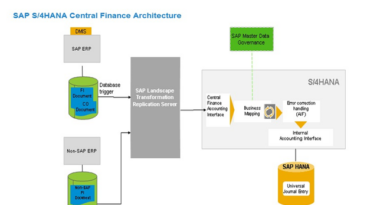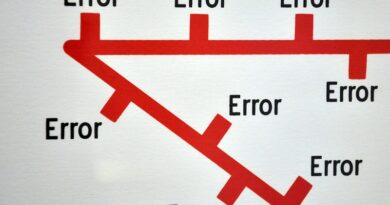How to maintain data mapping in SAP Central Finance by tcode FINS_CFIN_MAP_MANAGE?
In the previous post, I explained the different types of processes involved in SAP Central Finance. Processes like Key Mapping and Value Mapping falls under the data mapping category. But how to maintain data mapping in CFIN? If MDG is available, then you can maintain the key mapping or master data mapping via MDG and the value mapping directly in the CFIN system by using transaction code FINS_CFIN_MAP_MANAGE.
However, if MDG is not available, then you can maintain both the key and value mapping directly in CFIN using the standard data mapping tool available with transaction code FINS_CFIN_MAP_MANAGE. So, this is a standard T-Code in CFIN which can be used to maintain different types of master data and config elements.
Table of Contents
Maintain Data Mapping
In SAP, there are many master data elements like GL accounts, Cost Centers, Profit Centers, Material codes, Business Partners, etc. Therefore, maintaining key mapping is a process of assigning a CFIN master data element to a source system master data element. To give you an example, of how to maintain GL account mapping in CFIN, for instance.
FINS_CFIN_MAP_MANAGE Mapping Tool
- Execute transaction code FINS_CFIN_MAP_MANAGE in the CFIN system. In the ‘Selection of mapping entity and source system’ data box, there are two input options available.
Firstly, the ‘Mapping Entity‘ that includes the list of all the available data mapping elements. Secondly, the ‘Source System‘ that has the list of all the source systems mapped to the CFIN system. These details are maintained while doing the CFIN configuration.

2. After that, select the Mapping Entity as ‘General Ledger Account‘ and the relevant source system ID to maintain GL mapping.

3. Select the ‘Generate Template‘ radio button and provide the location in the ‘File Name’ field to create and store a CSV file. Click on the ‘Execute’ button at the top-left to generate the file.

CSV Template Structure
4. After generating the file, go to the same location or folder given in the ‘File Name‘ field and open the CSV file. The file has 6 fields in total concatenated by a semi-colon. In other words, maintain the data in the same file and format before uploading the mapping.

- Source Chart of Accounts – The Chart of Accounts code from the source system
- A Source GL Account – The GL account from the source system
- Source Company Code – The company code from the source system
- Target Chart of Accounts – The Chart of Accounts code in the CFIN system
- A Target GL Account – The GL Account in the CFIN system
- Target Company Code – The company code in the CFIN system
5. Maintain this CSV file with the GL data mapping. Map the GL Account 800000, company code 1000, and chart of accounts FIAA from the source system to the GL account 6400000000, company code US01 and chart of accounts OCOA in CFIN system, for instance. Save the CSV file.

Upload Mappings – FINS_CFIN_MAP_MANAGE
6. In transaction FINS_CFIN_MAP_MANAGE, upload the mapping by selecting the ‘Upload Mappings‘ radio button and selecting the CSV file location in the ‘File Name’ field. By default, the test run is active.
Execute the file in the test run first and check if the mapping is uploaded correctly. If it’s correct, then remove the ‘Test Run‘ checkbox and re-execute to maintain the GL mapping.

7. You have successfully maintained the GL mapping. Therefore, to view the mapping, select the ‘Display Mappings‘ radio button and click on ‘Execute’.


8. All the existing mappings will be displayed. Similarly, to maintain value mapping for other elements like company code, posting key, etc., follow the same process by selecting the relevant mapping entity in FINS_CFIN_MAP_MANAGE.
Besides, you can also delete the incorrect mapping by using the ‘Delete Mappings‘ radio button. Moreover, the existing mappings can also be downloaded in a CSV file by using the ‘Download Mapping‘ radio button.
I hope you have enjoyed reading this article, please leave a comment in case of any query. Above all, please do share this article with your colleagues and stay tuned.



